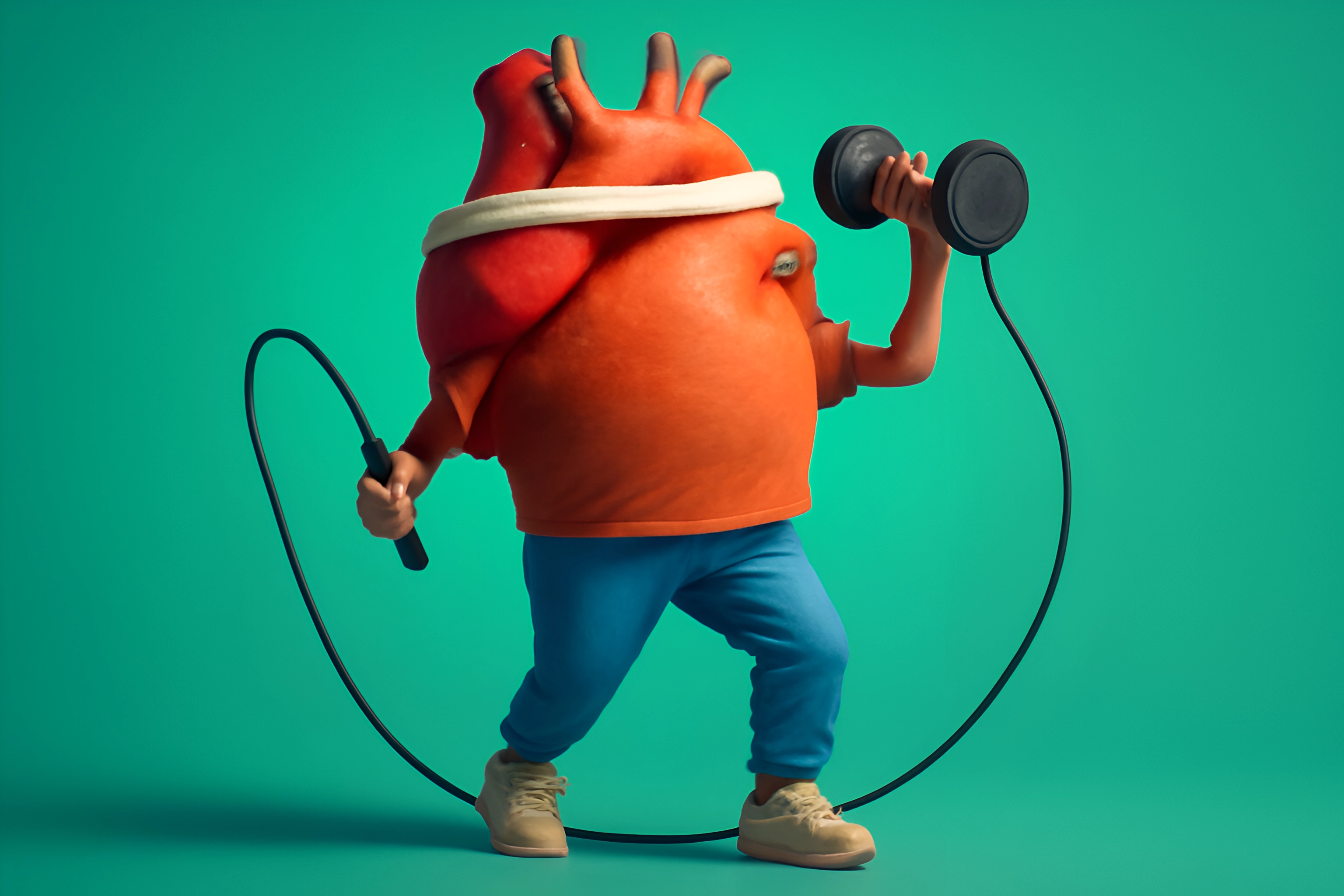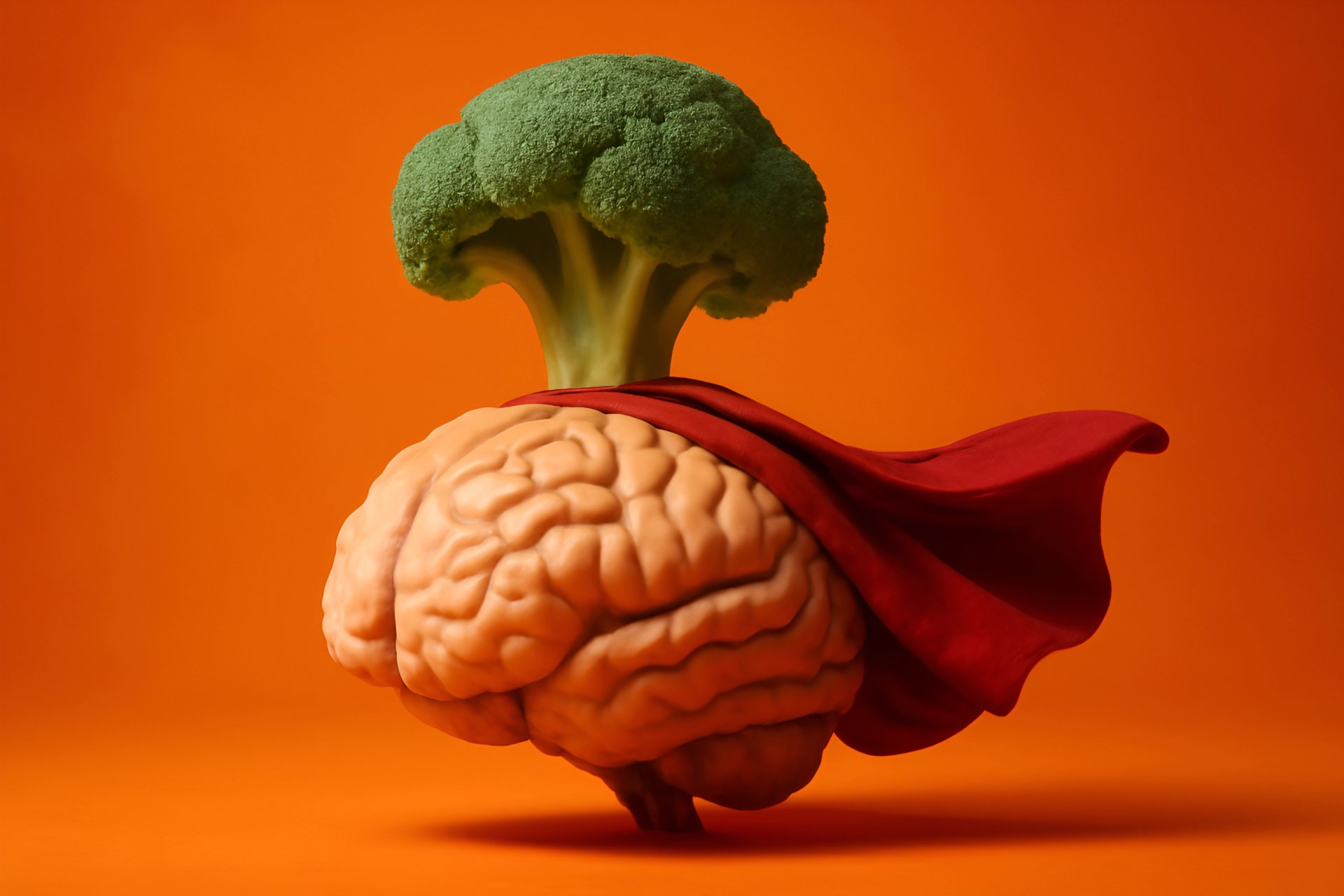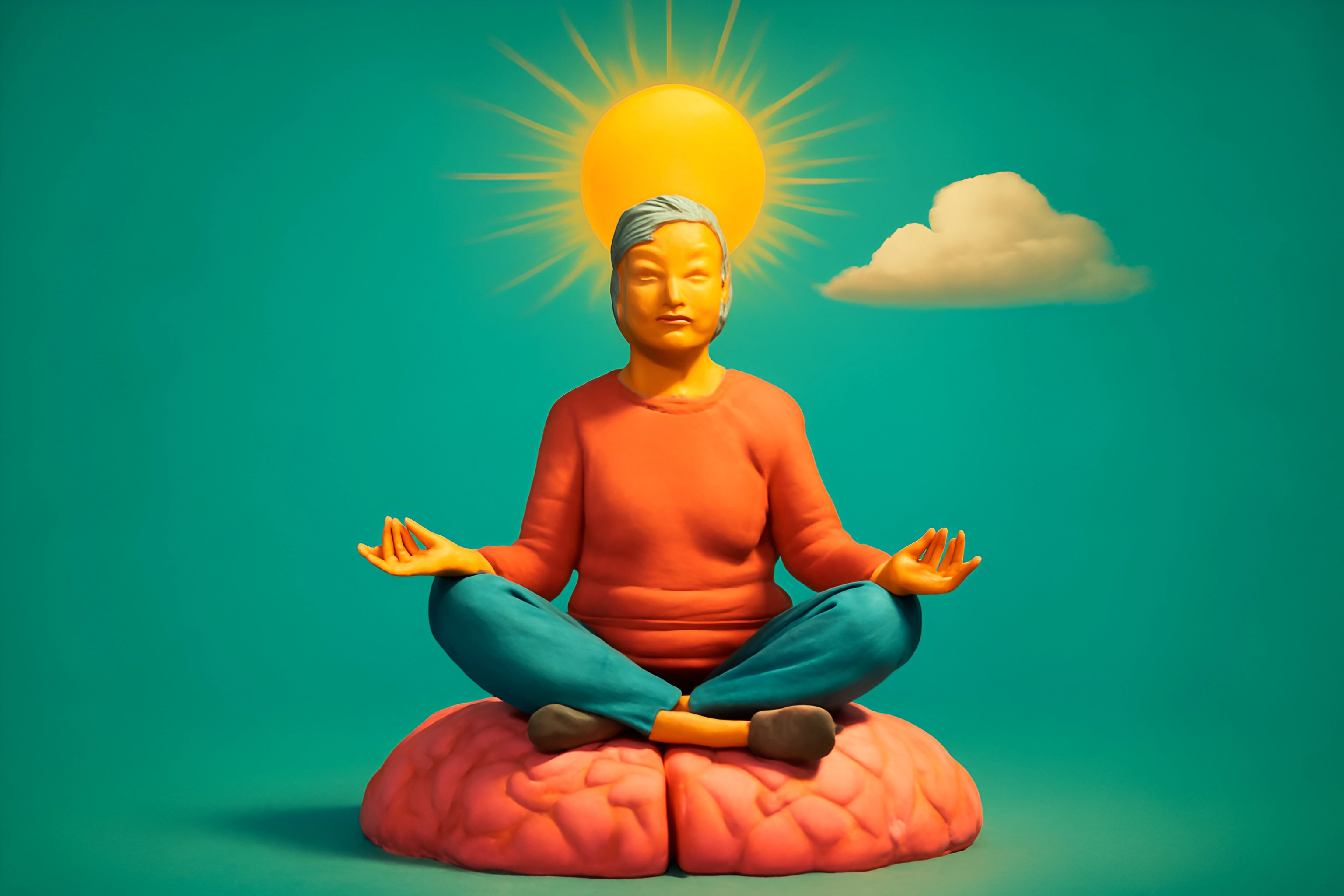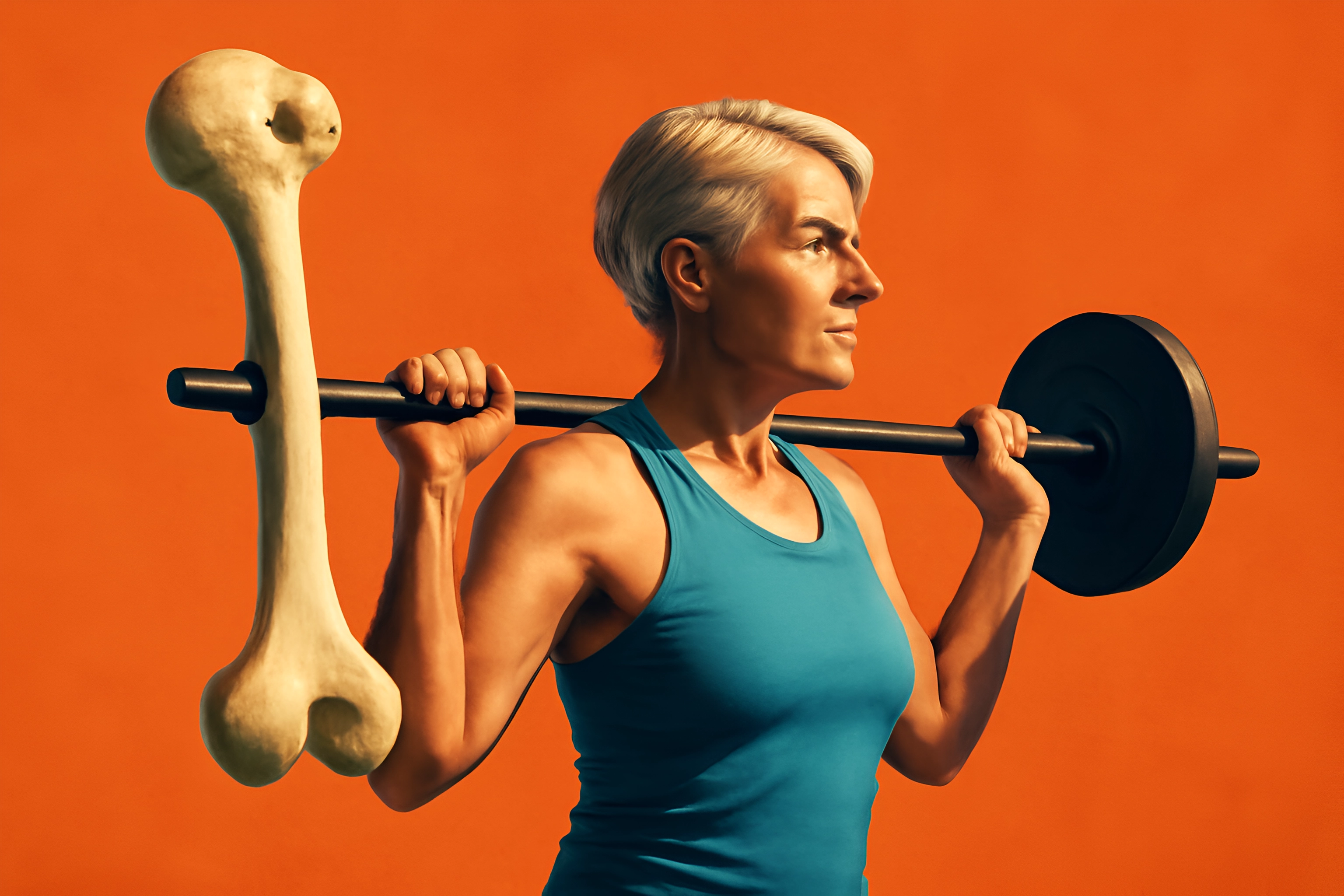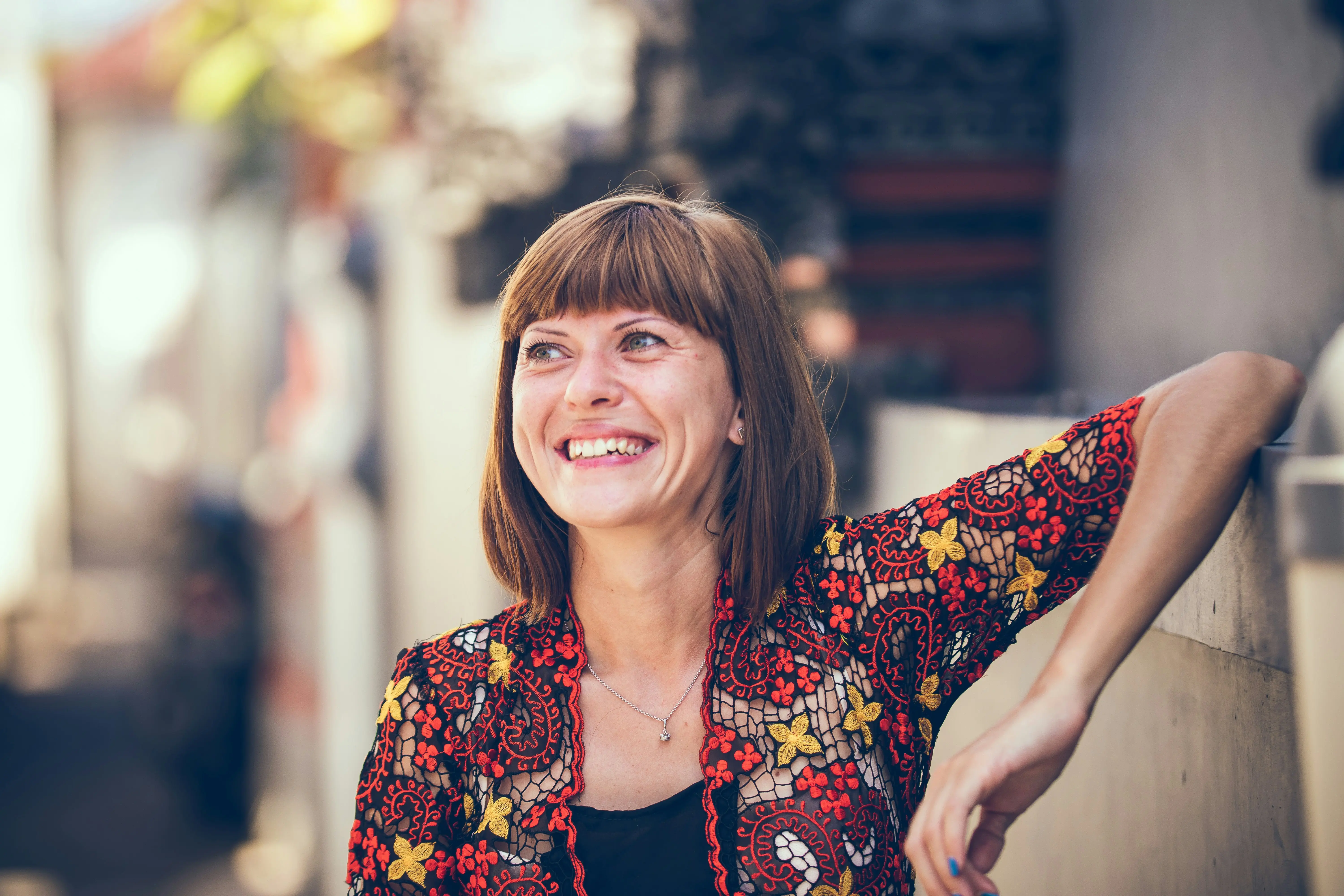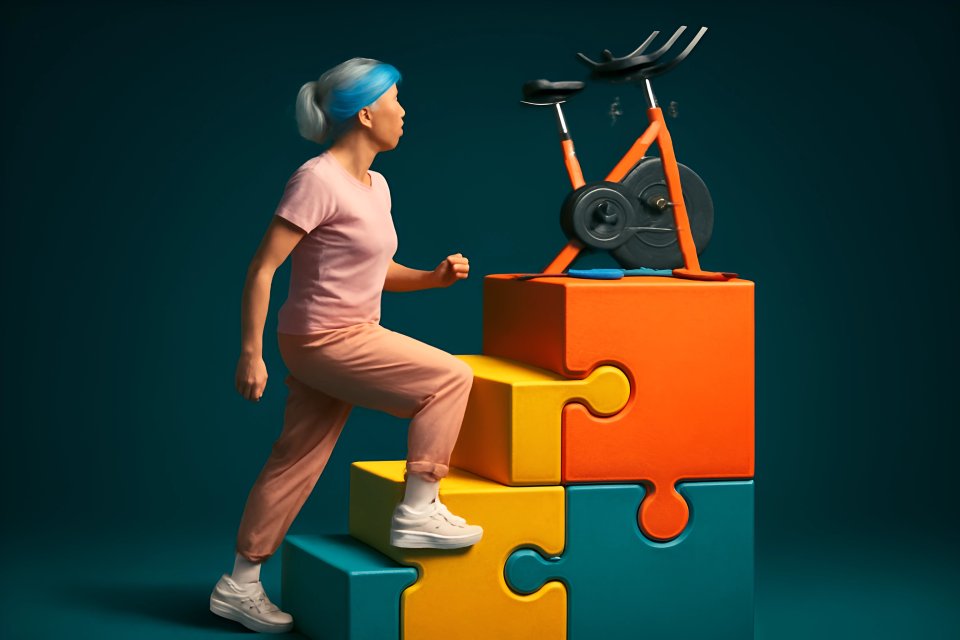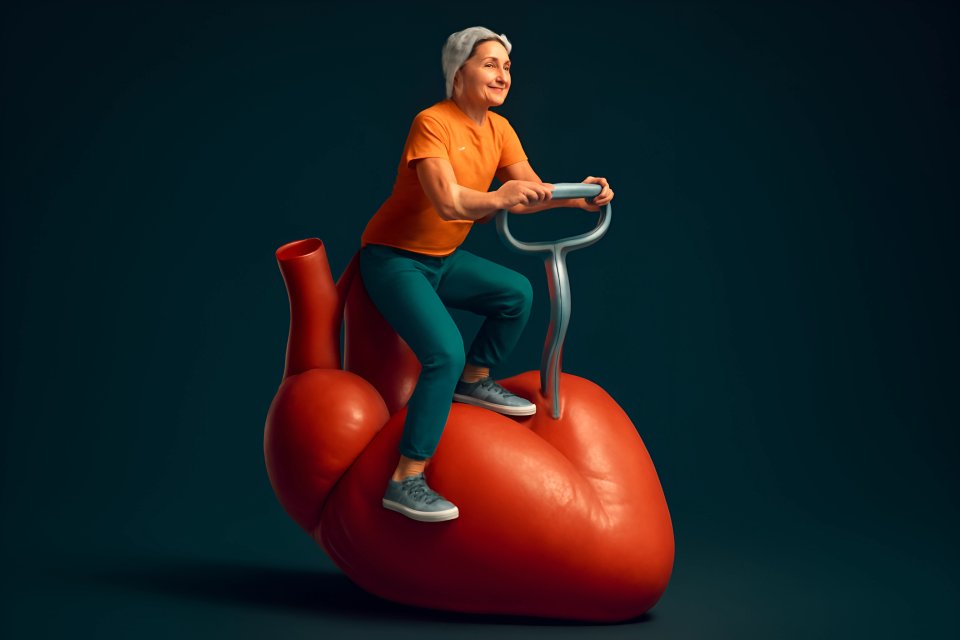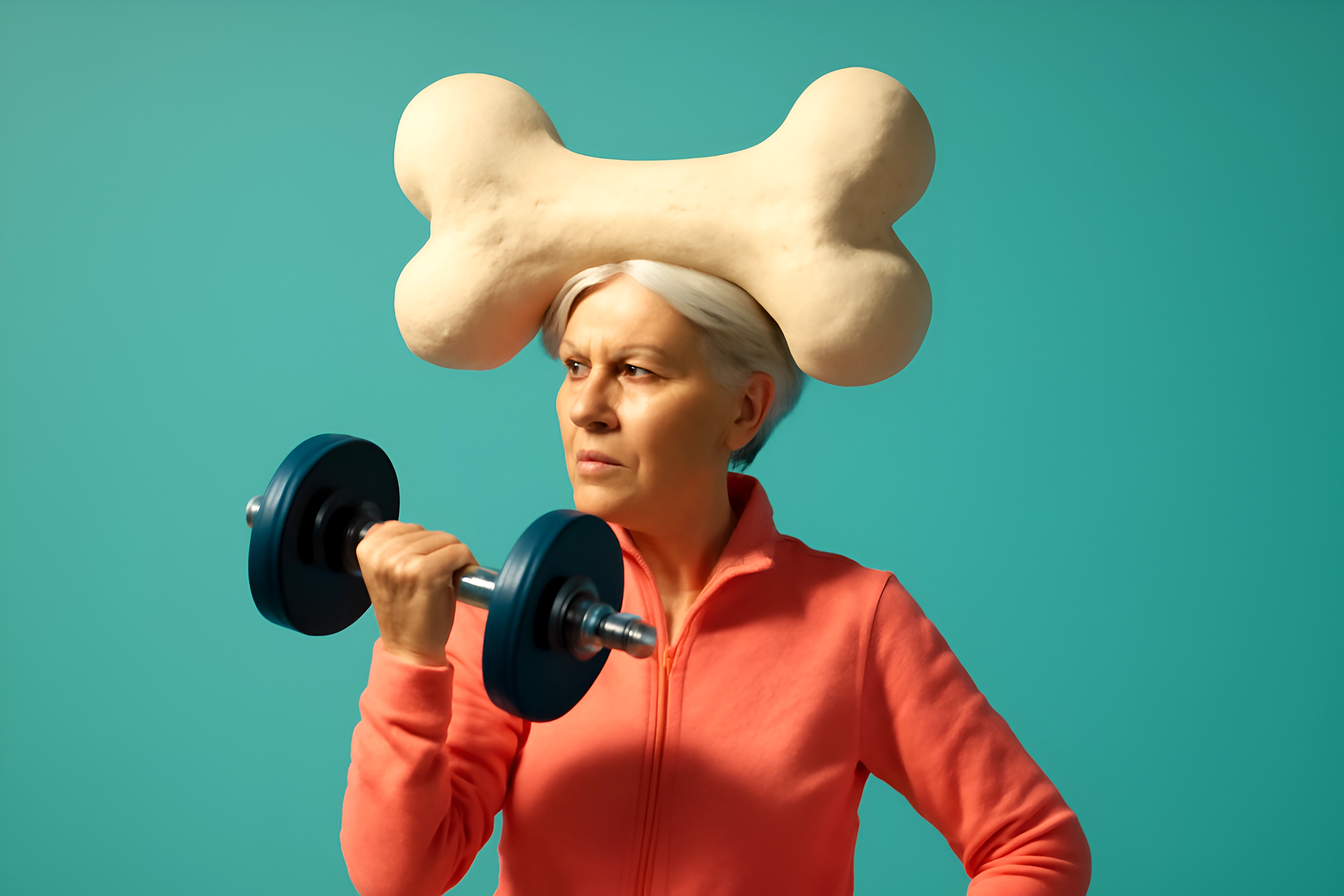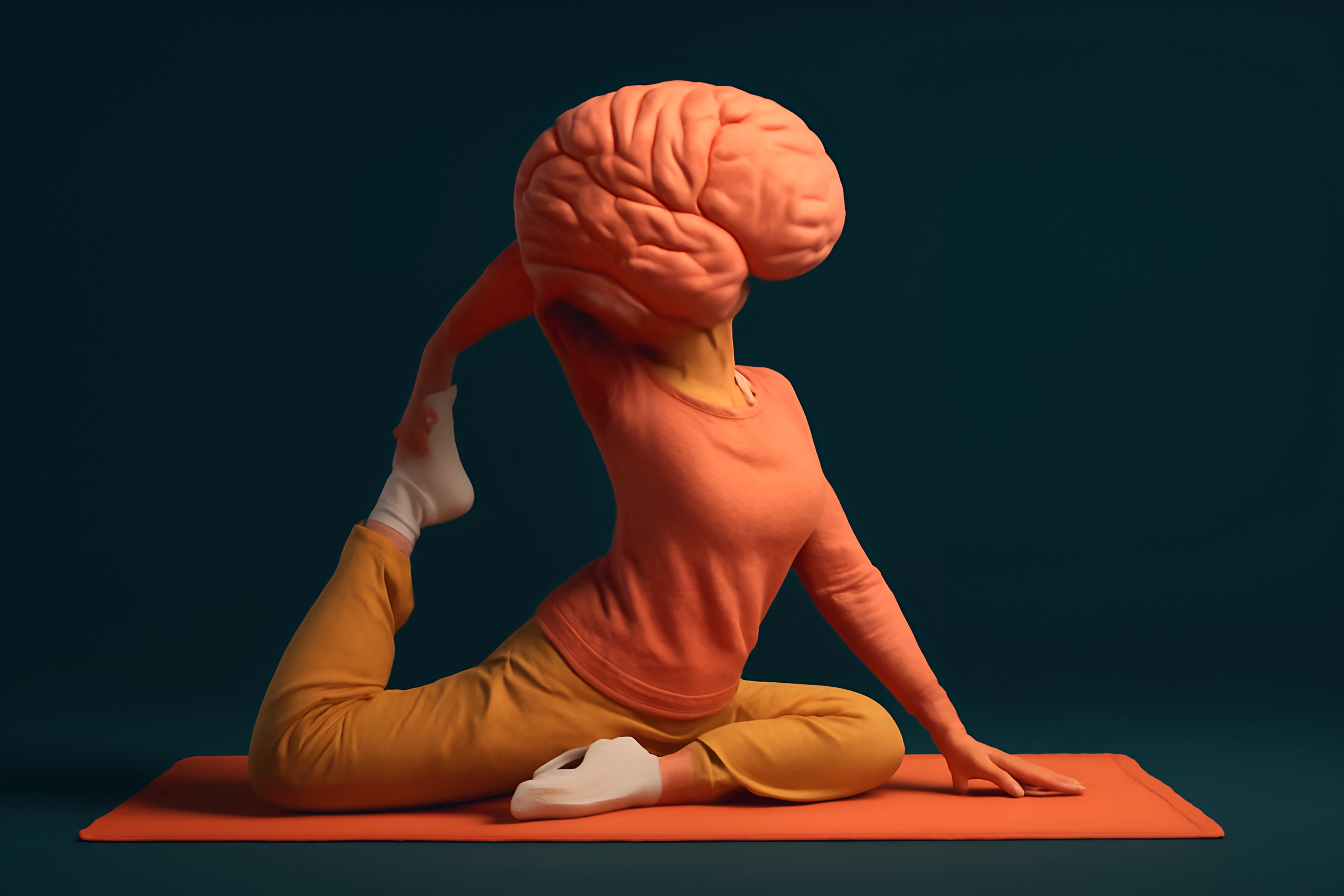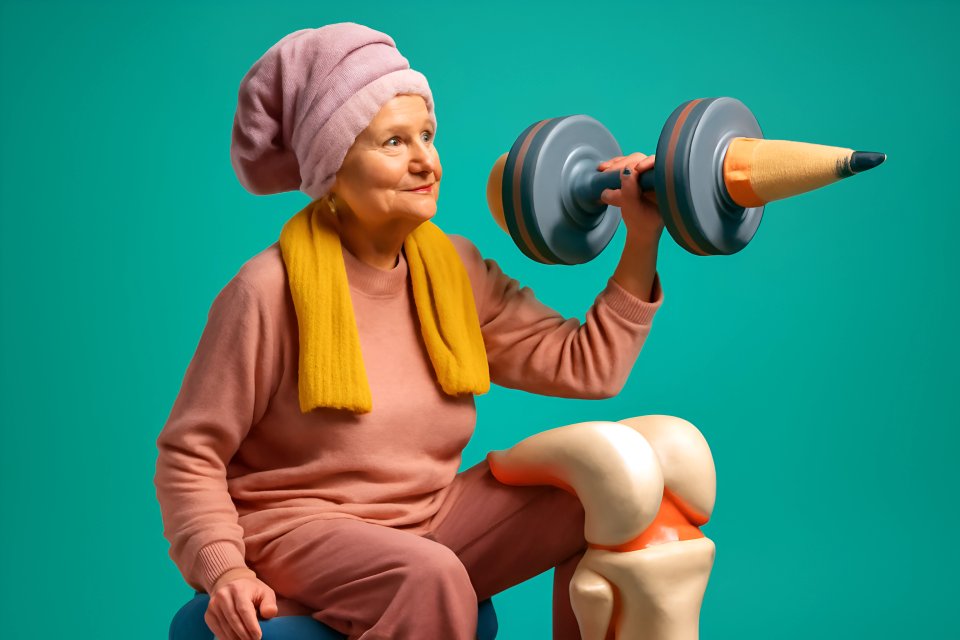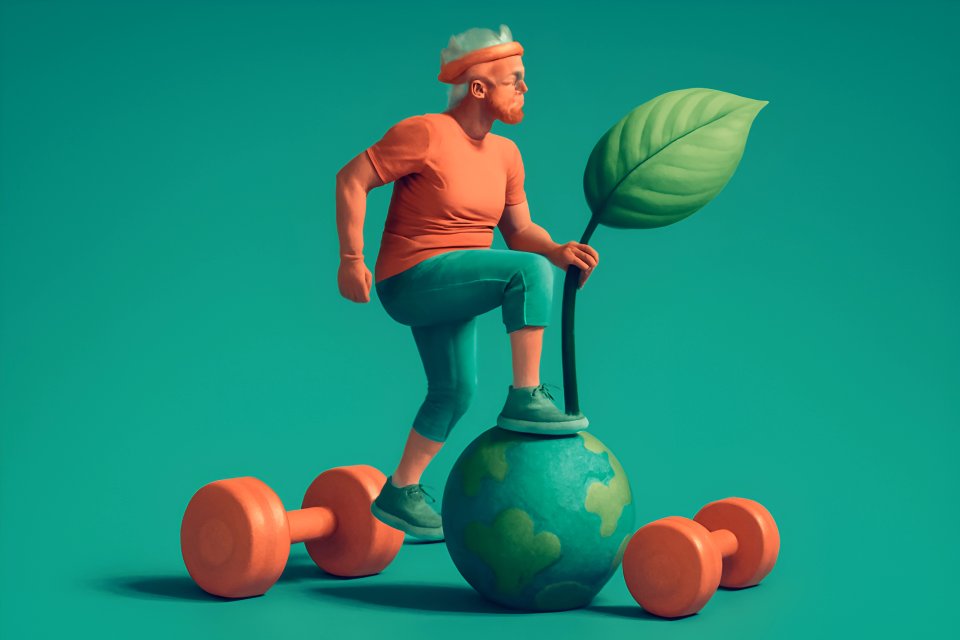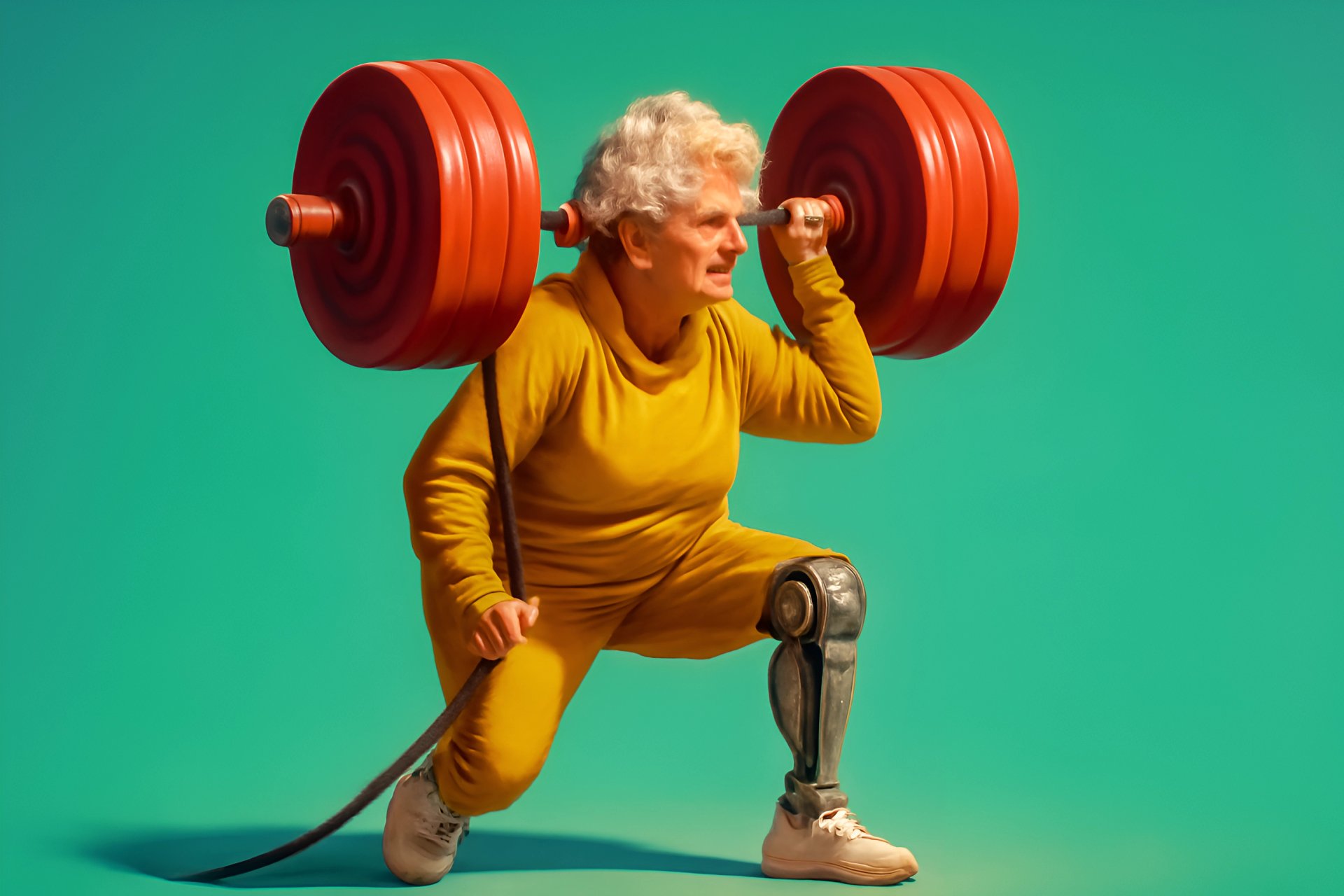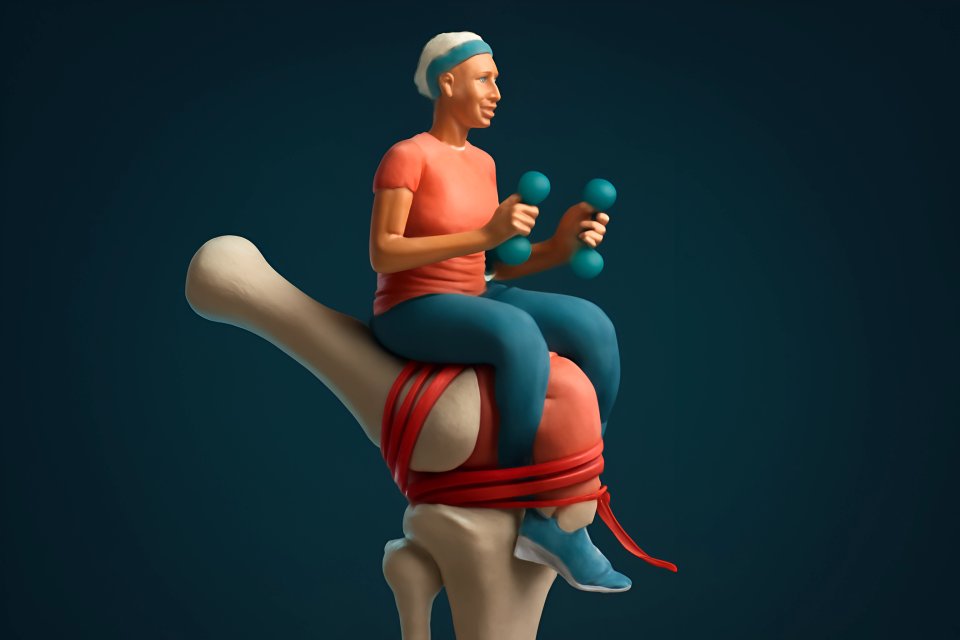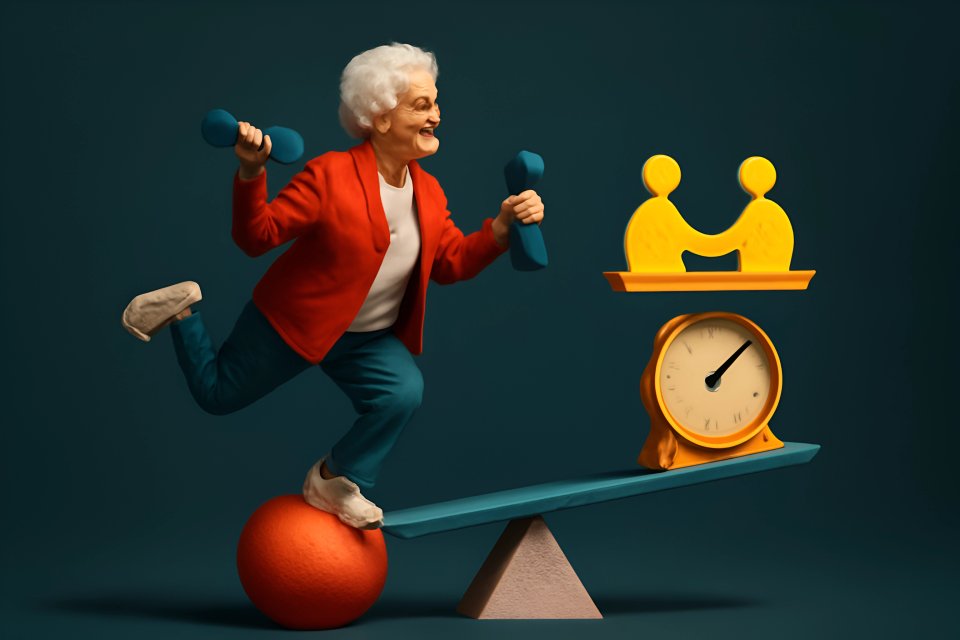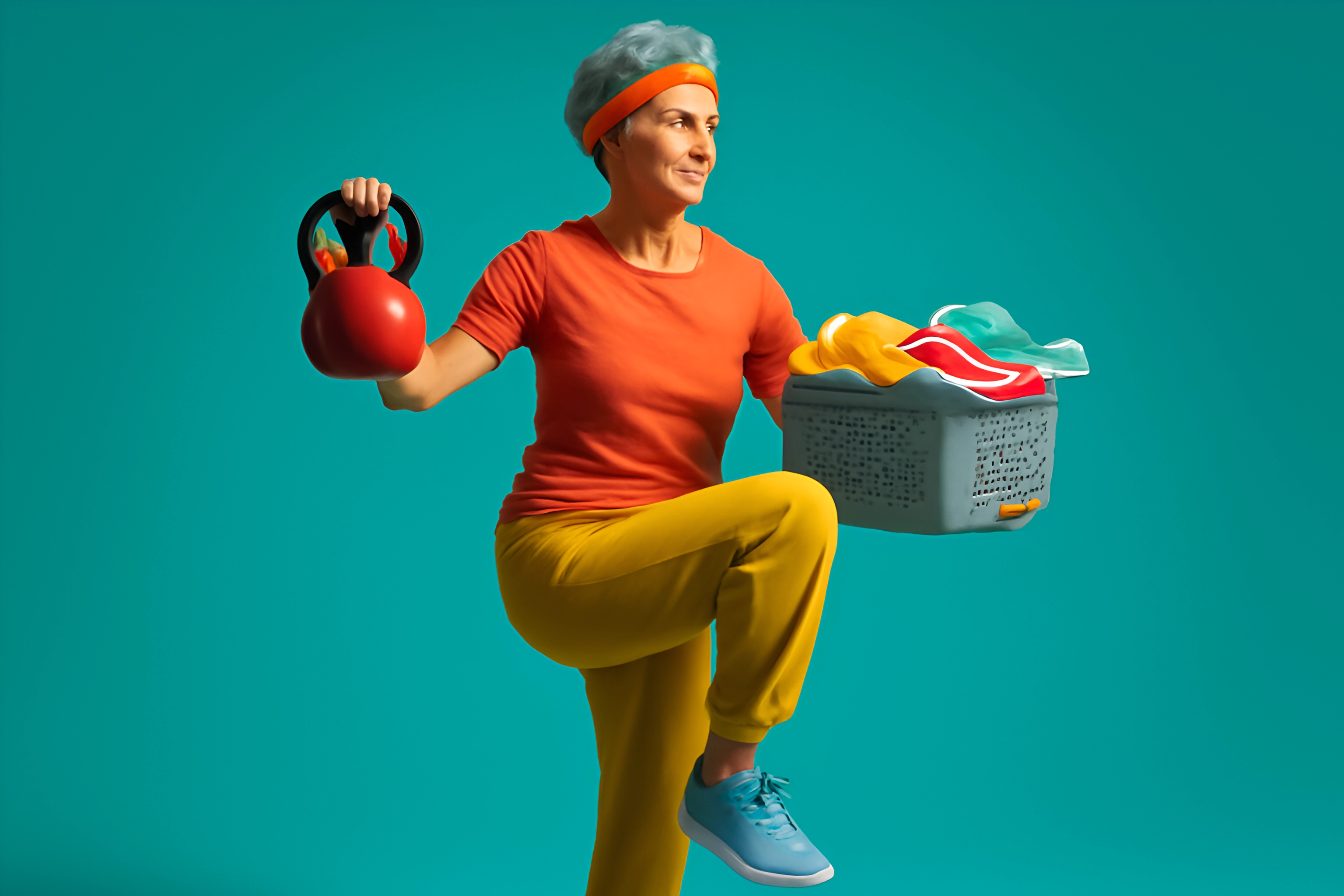
What if we told you that the secret to staying strong, steady, and fiercely independent isn't hiding in some expensive gym or complicated workout plan? What if it’s already woven into the fabric of your day? Unloading the groceries, playing with your grandkids, or even getting up from your favorite armchair—these aren't just chores; they are opportunities.
Let’s be honest. After 50, the goal isn't to become a bodybuilder. The goal is to live life on your own terms—to feel capable, energetic, and secure. It’s about having the strength to lift a bag of soil in the garden and the balance to walk confidently across an icy patch on the sidewalk, ensuring your own survival and security.
This is the power of functional fitness, and it’s a game-changer. It’s a simple mindset shift that transforms your daily routine into a powerhouse for building real-world strength. This post will guide you through the what, why, and how of functional fitness, providing a practical exercise routine for aging that uses movements you already do every day to build the strength and balance you need to thrive.
What is Functional Fitness? Training for Real Life
Forget everything you think you know about "exercise." Functional fitness isn't about isolating muscles with fancy machines or lifting the heaviest weights possible. It’s about one thing: training your body for the movements of real life, safely and efficiently.
Think of it as a dress rehearsal for your day. A squat isn't just a squat; it's the exact motion you use to sit down and stand up from a chair. A farmer's walk isn't just for athletes; it's the strength you need to carry heavy shopping bags from the car to the kitchen. An overhead press is simply the act of putting a heavy pot away on a high shelf.
This approach is why functional workouts for seniors are so profoundly effective. Instead of learning abstract exercises, you are perfecting the very patterns your body needs to navigate the world with confidence. Research from PubMed Central emphasizes that this type of training targets functional movement efficiency, which is absolutely crucial for maintaining independence as we age.
The Real-World Benefits of a Functional Fitness Approach
Why does this matter so much? Because the payoffs aren't just about looking fit; they're about feeling capable. They touch the core of our desire for a long, healthy, and self-reliant life.
- Improved Balance and Stability: This is the big one. Functional exercises strengthen the core and tiny stabilizer muscles that keep you steady on your feet, directly combating the fear of a life-altering fall. A study published in Sage Journals found that after just six weeks of functional training, older women showed significant improvements in dynamic balance, giving them a greater sense of security in every step.
- Increased Strength for Daily Tasks: Suddenly, everyday challenges feel less challenging. Carrying the laundry basket up the stairs, opening a stubborn jar, or lifting your grandchild for a hug becomes easier and safer. This isn't vanity; it's the strength you need to fully participate in your own life and care for the ones you love.
- Enhanced Mobility and Flexibility: Are you tired of feeling stiff and sore? Functional movements encourage your body to move through its full range of motion, reducing the aches and pains that can hold you back. This means more freedom to bend, twist, and reach without a second thought.
- Boosted Confidence and Independence: This is the ultimate prize. When your body can handle the demands of daily life, your confidence soars. According to the CDC, strength training is proven to boost self-confidence and reduce symptoms of depression, empowering you to remain the master of your own home and life.
Turn Your Daily Chores into a Powerful Workout
Your home is not just a place to live; it's your personal training ground. Here are six functional fitness exercises for seniors over 50 that you can start practicing today, turning mundane tasks into powerful moments of strength-building.
The Task: Getting up from a chair
The Exercise: The Sit-to-Stand (Bodyweight Squat)
This is the king of functional movements. Every time you stand up, you have a chance to build powerful legs and a stable core. The National Institute on Aging highlights how crucial preserving muscle mass is for mobility, and this exercise is a direct deposit into your strength account.
- Instructions: Sit on the edge of a sturdy chair, feet flat on the floor, hip-width apart. Without using your hands, engage your core, push through your heels, and stand up to a fully upright position. Slowly and with control, reverse the motion to sit back down.
- Focus: Builds leg strength, core stability, and balance.
The Task: Carrying groceries from the car
The Exercise: The Farmer's Walk
Don't make two trips—make one strong one! This exercise builds grip strength, a stable core, and an upright posture.
- Instructions: Pick up a heavy grocery bag (or a dumbbell/kettlebell) in each hand. Stand tall, pull your shoulders back, and keep your core tight. Walk a set distance, like the length of your hallway, turn around, and walk back.
- Focus: Improves grip strength, posture, and core stability.
The Task: Climbing the stairs
The Exercise: Step-Ups & Calf Raises
Stairs can be a challenge or an opportunity. Use them to build the single-leg strength and balance needed for confident walking and climbing.
- Instructions: Stand facing the bottom step of a staircase. Step up with your right foot, pressing through your heel to bring your left foot up to meet it. Step back down with your right foot, then your left. Alternate your leading foot. For an extra boost, pause at the top and perform a calf raise by lifting your heels.
- Focus: Builds single-leg strength, balance, and calf power.
The Task: Putting something on a high shelf
The Exercise: The Overhead Reach & Press
This movement maintains shoulder mobility and strength, making it easier to reach, lift, and place items without strain. You can start with something as simple as a can of soup.
- Instructions: Stand with your feet shoulder-width apart, holding a light object (like a can or a small weight) at shoulder height. Engage your core and press the object straight overhead until your arm is fully extended. Slowly lower it back down with control.
- Focus: Enhances shoulder strength and mobility.
The Task: Standing at the counter washing dishes
The Exercise: The Single-Leg Stand
Balance is a skill, and you can practice it anytime. This simple exercise trains the stabilizer muscles in your ankles, knees, and hips.
- Instructions: While standing at a counter or sink for support, shift your weight onto one foot and lift the other foot off the ground a few inches. Try to hold for 10-30 seconds without wobbling. Switch legs and repeat.
- Focus: Dramatically improves balance and ankle stability.
The Task: Picking something up off the floor
The Exercise: The Hip Hinge
Protect your back! Learning to bend properly by hinging at your hips instead of rounding your spine is one of the most important skills you can master.
- Instructions: Stand with your feet hip-width apart, with a slight bend in your knees. Keeping your back straight, push your hips backward as if you're trying to shut a car door with your behind. Lower your torso until you feel a stretch in your hamstrings, then squeeze your glutes to return to a standing position.
- Focus: Strengthens the glutes and hamstrings while protecting the lower back.
How to Weave These Movements into Your Week
The secret to success isn't finding more time in your day; it's about bringing more intention to the time you already have. Instead of rushing through a task, slow down. Focus on engaging the right muscles and moving with purpose.
The key is to make it automatic. Don't wait for motivation; build a habit. Start by choosing just one or two movements to focus on each day. Use "triggers" in your environment to remind you—for example, decide to do 10 Sit-to-Stands every time a TV commercial comes on, or practice your Single-Leg Stands while the coffee brews.
Here is a sample schedule to transform your week into a practical exercise routine for aging with vitality:
| Day | Focus Movement | Trigger |
|---|---|---|
| Monday | Sit-to-Stands | During TV commercials |
| Tuesday | Single-Leg Stands | While brushing your teeth |
| Wednesday | Farmer's Walk | When bringing in groceries |
| Thursday | Hip Hinge | Every time you feed the pet |
| Friday | Overhead Reach & Press | When putting dishes away |
| Saturday | Step-Ups | Once a day on the stairs |
| Sunday | Active Rest | A mindful walk focusing on posture |
This approach builds consistency without overwhelming you. For more guidance, our article on how to build a low-impact exercise routine over 50 can show you how to structure these movements into a complete weekly plan.
Your Safety Checklist for Functional Fitness
Power and confidence come from moving safely. As the Mayo Clinic notes, resistance training is incredibly beneficial, but doing it right is paramount to avoid injury and build lasting strength.
- Listen to Your Body: This is your number one rule. Discomfort and muscle fatigue are normal, but sharp, shooting, or sudden pain is not. Stop immediately if you feel anything that doesn't seem right.
- Use Support: When practicing balance exercises like the Single-Leg Stand or Step-Ups, always have a sturdy chair, wall, or countertop nearby to hold onto. Safety first, always.
- Focus on Form, Not Speed: Slow, deliberate, and controlled movements are far more effective and safer than fast, jerky ones. Quality will always beat quantity.
- Breathe: It's a common mistake to hold your breath during exertion. Remember to exhale on the hardest part of the movement (e.g., as you stand up from the squat) and inhale on the easier part.
- When to Consult a Pro: Before starting any new exercise program, it is always wise to speak with your doctor or a physical therapist. This is especially important if you have chronic health conditions, balance issues, or are recovering from an injury.
For those who need a gentler start, our guide on customized low-impact home workouts for seniors with limited mobility offers excellent modifications.
Your Strongest Chapter Starts Today
Fitness after 50 doesn't have to be complicated, intimidating, or expensive. The most powerful and effective movements you can do are the ones that prepare you for a vibrant, active, and independent life. Your daily routine is not an obstacle to your fitness; it is the path.
Here at FitOverFifty, we believe that strength, balance, and vitality are built one small, intentional movement at a time. You don't need a gym membership. You just need to see the opportunities that are already all around you.
You have the power to build a stronger, more balanced future, starting right now with the next chair you stand up from.
What's Your First Move?
What is one everyday movement you're going to focus on this week? Share your plan in the comments below—we’d love to cheer you on!
For more tips on aging with strength and vitality, subscribe to the FitOverFifty newsletter and get our best advice delivered straight to your inbox.


